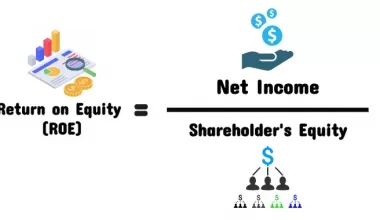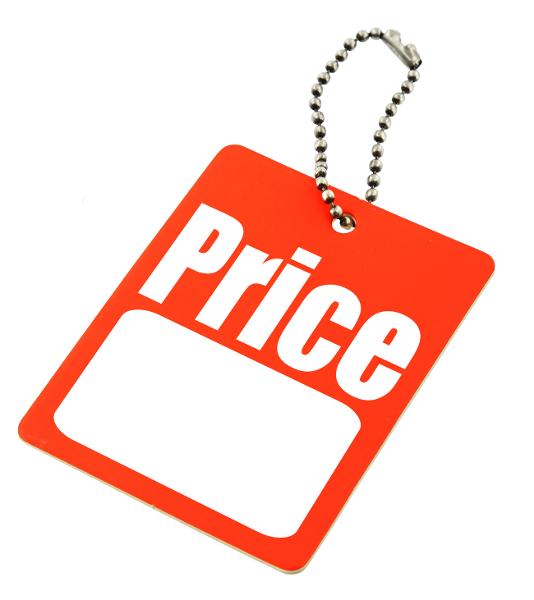EBay fundamental business is a platform business strategy that generates money from transaction fees via its marketplaces. In short, eBay makes money primarily by charging fees on successfully completed transactions. For example, on $87 billion in gross item value sold on eBay in 2023, the business collected $9.77 billion in transaction revenues at an 11.19% take rate (fee).
How Does eBay Make Money?
EBay Inc. is a multinational e-commerce corporation. eBay’s income model is divided into three major categories:
- The Marketplace: which is an e-commerce platform that makes money primarily through fees.
- StubHub: An online site that sells sports/event tickets, with fees as its principal source of revenue.
- Advertisements: The principal source of revenue for a local classified platform.
Let us go over these in greater detail:
#1. eBay Marketplace
EBay has already built a name for itself in online trading. People-to-people trading has become more convenient, especially when the trading process is computerized. This procedure has laid the groundwork for the next generation of trading norms, previously carried out in garage sales or flea markets.
Trading takes place on eBay at either a fixed price or as an auction. In the case of an auction, there are two options.
- The buyer’s auction, used by buyers who want to buy a single item.
- The other type of auction is the seller auction, in which sellers bid on their product in various bids from which the buyer can choose.
eBay has gone on to provide exceptional services for buyers and sellers, such as the eBay Top Rated Seller Program, eBay Money Back Guarantee, Verified Rights Owner Program, Feedback Forum, eBay Top Rated Seller Program, and the Safe Harbor Program.
These characteristics aim to make their consumers feel comfortable to deal with their partners, who desire to stay anonymous.
Read Also: eBay Selling Fees: Pricing, Calculators and Best UK Practices
“Buy It Now” is the most basic way to deal on eBay. Most online markets currently use this strategy. Buy It Now can be used in three different ways.
- If you come across the Buy It Now option in the Auction-style postings, you can either buy it now or bid in the auction yourself. The differentiator will be that the Buy It Now Price will be at least 30% greater than the starting price of the auctions.
- If you see the Buy It Now option in the Reserve Price auctions, your choice will be displayed only once you meet the official reserve price.
- The final option is to Buy It Now with no bidding. Customers can purchase any things they want at a set price. This is prevalent in any e-commerce business.
Many of these capabilities are given at no cost to buyers. The sellers, however, will be charged a set fee.
1. Insertion Fee:
This is the fee charged by eBay to sellers for listing their products on its site.
When a seller posts an item on eBay, he gets charged an insertion fee. The fee varies by item type and is levied per listing.
2. Listings with no insertion fees
Every eBay seller receives at least 50 free listings per month. After giving vendors the first 50 free listings, the platform charges them for each other listing. The price for movies, music, DVDs, video games, and books is 5 cents. It can cost up to 30 cents per listing in any other category.
3. The Final Value Fee (FVF)
eBay will charge a commission if a seller makes a sale on its site. The fee, known as the Final Value Fee, ranges from 2% to 12% of the final sales price. The commission can differ depending on the item or product. In addition, depending on the category, there may be possible upgrading fees and other charges.
Source: ebay.com | eBay’s basic seller fees
#2. Stubhub
EBay acquired StubHub in 2007. It works as a business specializing in online ticket swaps, allowing users to buy and sell sports, music, and theater event tickets. As its popularity grew, it became the world’s largest ticket distributor.
- Seller Fees – While listing tickets is free; sellers must pay 15% of the ticket’s sales price at the time of sale. The amount of ticket the seller sells also has a role in lowering its fees. If the sold ticket numbers are met, the seller’s costs could be reduced by 10%.
- Buyer Fees – StubHub charges its purchasers a service and delivery fee of around 10% of the sales price. These fees are subject to change depending on the event’s popularity, location, and availability, among other factors.
#3. Classified Websites
Most of eBay’s local online trade goals are delegated to its local classified platform subsidiary. eBay generates money primarily through advertising on various classified services. Its business concept is comparable to the business models of Craigslist and Letgo. Local categorized subsidiaries include:
- Bilbasen: Danish online vehicle marketplace.
- BDA: A well-known classified ad website in Denmark.
- 2dehands-2ememain: Belgian internet platform for selling used items.
- eBay Kleinanzeigen: German online classifieds website.
- Gumtree: An online marketplace for the United Kingdom, Australia, Singapore, and South Africa.
- Kijiji: A classified website in Canada and Italy.
- MarketPlaats: A Dutch online marketplace.
- Mobile.de: A well-known automotive marketplace in Germany.
- Motor.co.uk: A popular automotive search website in the United Kingdom.
- Vivanuncios: A Mexican internet retail marketplace.
How Does eBay Spend Money To Make Money?
Companies must spend money to make money.
The necessary expenses to make the bottom line function may vary depending on the business model you are also running.
In 2018, eBay’s primary expenses were customer assistance, site operations, and payment processing, totaling more than $2.3 billion, or more than 22% of total revenues.
Other significant expenses in sales and marketing (32% of total revenues in 2018) include advertising and marketing program costs (both online and offline), employee salary, user discounts and rewards, contractor charges, facility costs, and equipment depreciation.
Other significant expenses include product development and general and administrative costs.
PayPal spin-off eBay
In the PayPal business model, I discussed how eBay acquired the company at one point for $1.5 billion in 2002.
PayPal requires a robust payment processing mechanism within its leading platform.
PayPal’s expansion expanded far beyond eBay, which had served as the company’s principal growth driver in its early years of operation. Until PayPal outperformed eBay in terms of value.
Indeed, by 2018, PayPal had earned more than $15 billion in sales and more than $2 billion in net profitability. PayPal’s market valuation surpassed $120 billion in October 2018, while eBay’s was $32 billion.
eBay Divisions, Acquisitions, and Exits
EBay Inc. has made 65 acquisitions, 45 investments, 14 lead investments, and 14 successful exits.
Revenue and Profit of eBay
EBay’s revenue in 2023 was $13.3 billion.
Because eBay Inc. is a publicly traded business, they are required by the Securities Exchange Act of 1934 to file continuous financial files with the United States Securities and Exchange Commission (SEC). All of eBay’s publicly issued financial reports, including annual reports, can be found on their website in the investor area.
What Are Ebay’s Business Model and Revenue Model?
eBay produces money by combining a few revenue models within their organization, which are as follows:
- Business concept dependent on commissions
- FFS (fee-for-service) business model
- Business model for advertising
- Business model based on subscriptions
- A business model based on mergers and acquisitions (M&A).
eBay Funding and Market Capitalization
According to eBay’s Crunchbase page, the company has raised $6.7 million in two funding rounds and has a market capitalization of $48.18 billion as of September 2023.
Is it a Good Idea to Sell on eBay?
Absolutely. eBay is a vast and expanding marketplace with reasonable fees. Many new vendors still make full-time earnings there, and existing firms utilize it to supplement their revenue.
Amazon Business Model vs. eBay Business Model
Amazon and eBay’s business models are distinct and give the companies the most effective and efficient means to earn revenue. While there are some parallels between the business models, there are also significant variances.
The primary distinction between the business models of eBay and Amazon is that eBay is also an auction house, and the corporate entity actively facilitates the sale of products between third-party buyers and sellers. Buyers search the site for desired outcomes and then bid on them in discrete auctions. The buyer with the highest bid at the end of the time limit wins the product.
The Buy It Now option is also available. Meanwhile, Amazon stocks and distributes goods directly, which are sold via a vast network of Amazon warehouses. There is no need for auctions because the price is fixed.
Amazon purchases can be made with the ‘one-click buying option,’ and unlike eBay, payment can be completed without leaving the website. eBay allows you to customize and personalize your listings, making them more enticing than Amazon’s neutral listings. This results in more sales on eBay rather than on Amazon.
Is eBay completely free?
As a buyer, eBay is free to use; there are no fees to open or maintain an account. You are only charged money if you buy something or make a winning bid or offer on something. However, using eBay as a seller will cost you money to manage a store, post products for sale, sell items, and so on.
Plans for the Future
In its annual report, eBay noted that one of its key goals for the future was to improve the user experience on its platform. On the buyer side, the organization intends to eliminate friction, introduce new methods for comparing value, and look for unique inventory. The seller experience will also change; sellers will have access to new tools and extra data points. Though eBay already has a significant user base, it intends to expand more in the future, mainly by encouraging new customers to make their first purchase. Finally, enhanced delivery and returns infrastructure will benefit all customers.
Above and Beyond the Bid
Outside of the marketplace, eBay will continue to grow its advertising and payments businesses, aiming to turn them into $1 billion and $2 billion possibilities, respectively.
Major Obstacles
Given the eCommerce industry’s massive and rapid changes since eBay’s inception, the company’s business model is constantly under attack. To be profitable, it must continue to adapt to changing client tastes, new technology, and increasing competition. Although eBay is a large company, it is overshadowed by other tech behemoths such as Alibaba, Amazon, and Google, all of whom have launched eCommerce initiatives. As a result, eBay must continue to build its market niche and cultivate its user base.
Volatility in the economy
Changes in the global economy, like with other eCommerce enterprises, could influence client spending habits, thereby harming eBay’s revenue. Ongoing trade wars may also impact eBay, as cross-border trade is a critical component of its economic model.
Conclusion
eBay will undoubtedly continue to make progress in the online business arena. Although it does not have the market dominance of Amazon, it is nevertheless one of the most popular online merchants.
All it needs to do is make itself more available to a broader population and penetrate new markets throughout the continent, and it will quickly catch up to Amazon.
- EBAY LOGO: Meaning, Font, and History
- HOW TO FIND A SELLER ON EBAY: Simple Ways to Search for Sellers
- eBay Selling Fees: Pricing, Calculators, and Best UK Practices
- eBay Fees UK: How Much are eBay Fees in UK & How do You Reduce Them
- EBAY AFFILIATE: Detailed Guide






